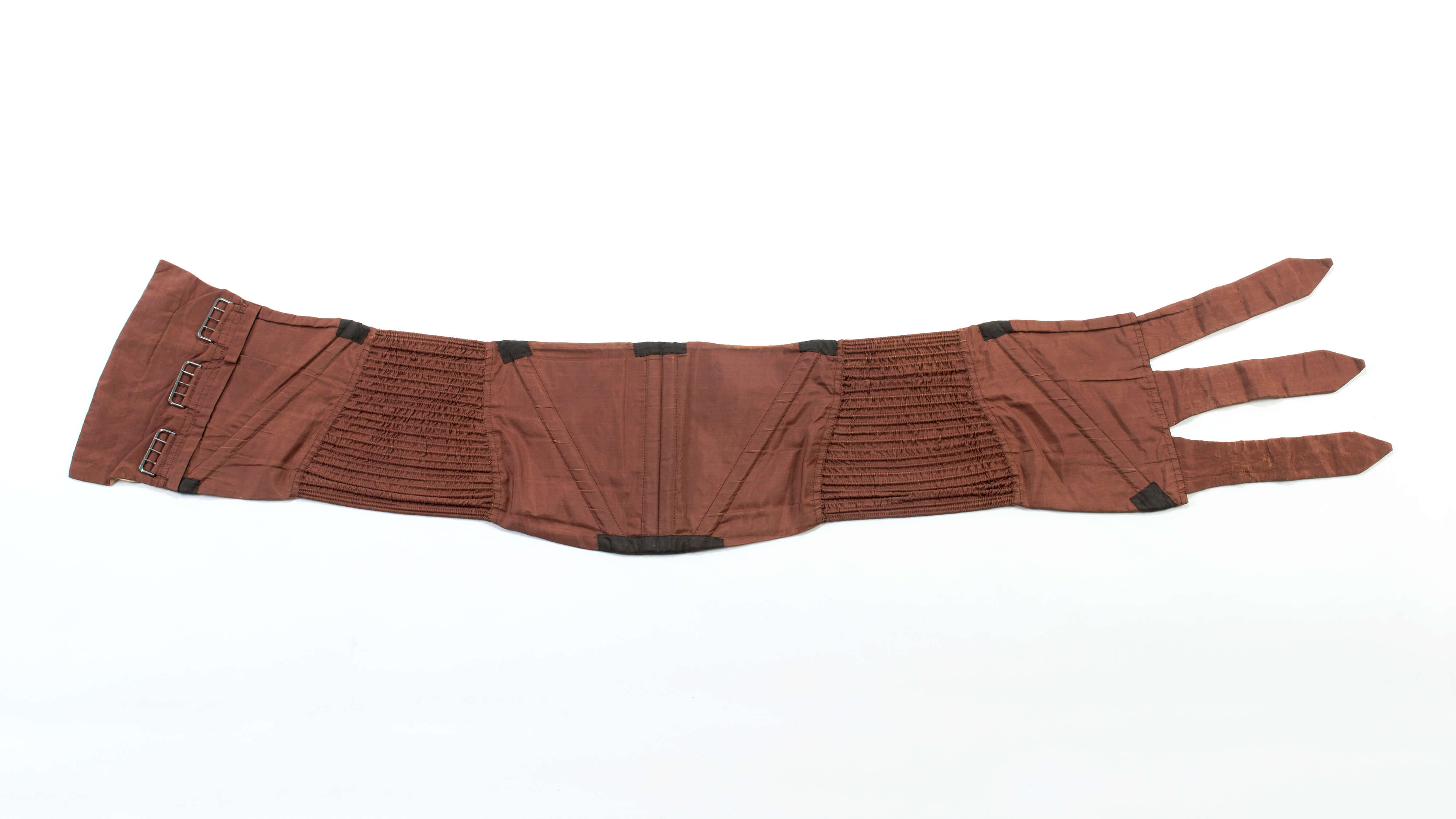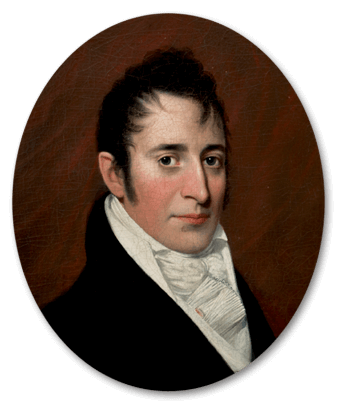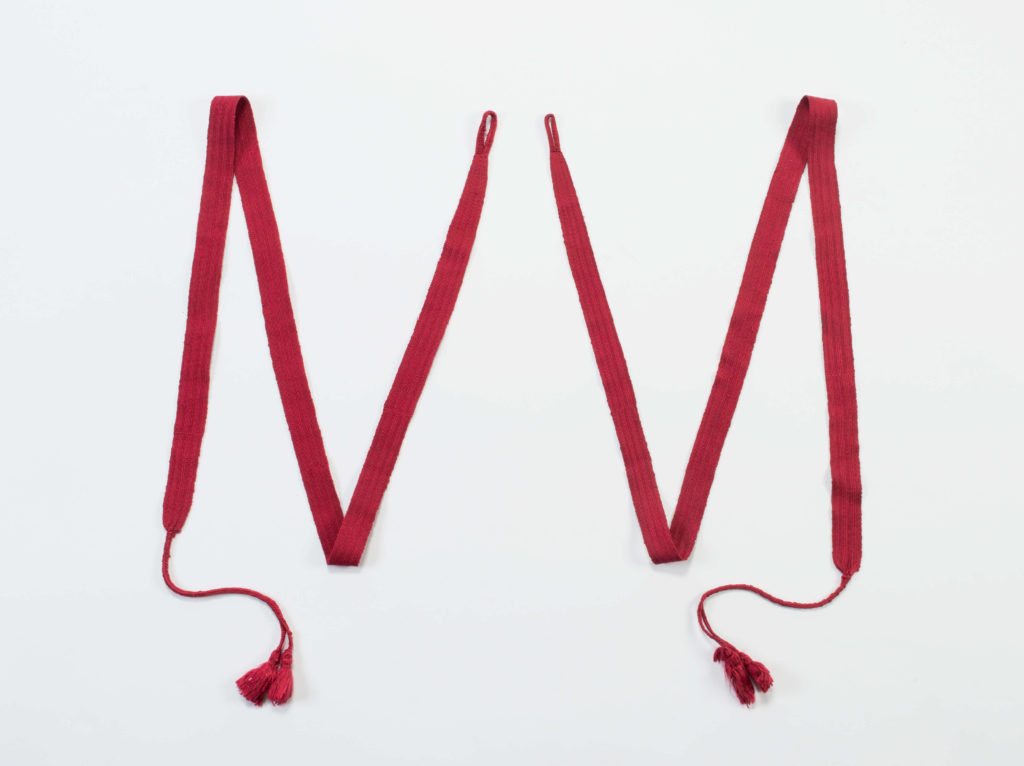
Thomas Chew’s Stays
This set of stays belonged to Thomas John Chew, who was USS Constitution’s purser during the War of 1812. Surviving portraits of Chew suggest that he was fashion-conscious. He was certainly wealthy enough to indulge in the latest trends, so it is unsurprising to find this piece among his effects.
The male corset (stays) was designed to allow fashionable men to achieve the narrow-waisted look popular in the late 1820s and 1830s. According to the Workingwoman’s Guide of 1838, men’s stays were used in the army, for hunting, and for strenuous exercise. Valerie Steele, in her book The Corset: A Cultural History, argues that the advent of the male corset in the 1820s was directly related to a shift in the ideal male body type. The “aristocratic” body was no longer bluff and prosperous, but had become feminized. After 1815, dandies increasingly adopted fashions that emphasized feminine characteristics including padded chests, tight, narrow sleeves and shoulders, and narrow waists. Besides skillful and scientific cutting and tailoring, the only way to achieve this ideal look was through body altering foundation garments. This emphasis on the cinched waist continued throughout the 1830s. One Frenchman in 1831 insisted that “the secret…of the dress lies in the thinness and narrowness of the waist. Catechize your tailor about this…Insist, order, menace…Shoulders large, the skirts of the coat ample and flowing, the waist strangled – that’s my rule.”[1]
Despite its popularity, the practice of men wearing a corset was not without controversy. Some considered the idea ridiculous, and others looked with uneasiness on a practice that they feared contributed to the effeminacy of men and a concomitant loss of national strength and military might. That Thomas Chew owned such a garment suggests that he was not simply aware of the latest in European fashion trends, but was willing to participate in a mildly controversial display of sartorial splendor.
[1] Louis Maigron, Le romantisme et la mode : d’après des documents inédits (Paris: H. Champion, 1911), 90.
Date Created
1810-1820
Medium
Whalebone, Wire, Cotton, Linen
Dimensions
[H]7 1/2 in. [L]45 in.
Catalog Number
1438.5
Credit Line
USS Constitution Museum Collection.
Terms of Use

This work is licensed under a Creative Commons Attribution-NonCommercial-NoDerivs 3.0 Unported License

